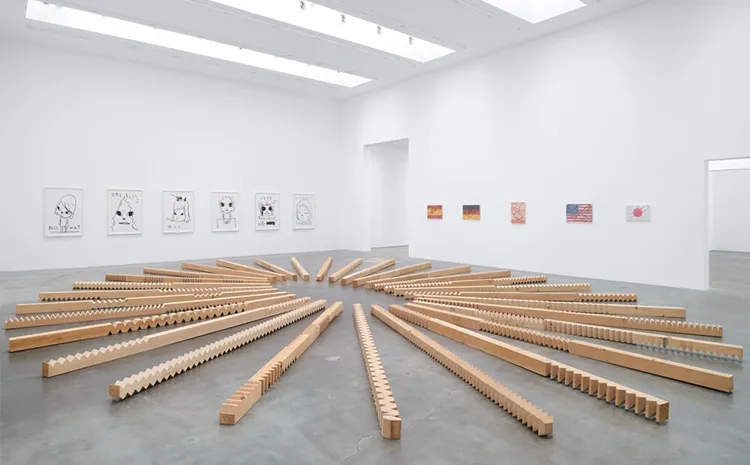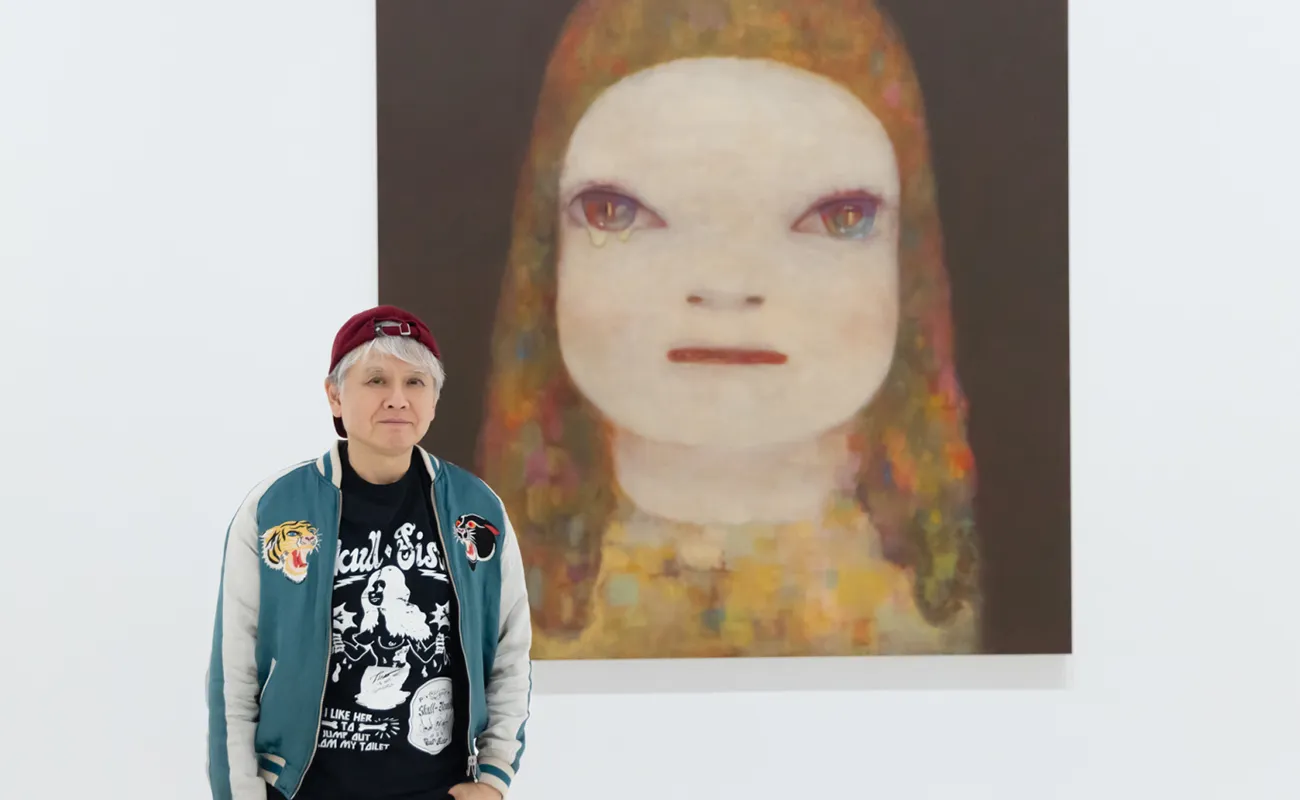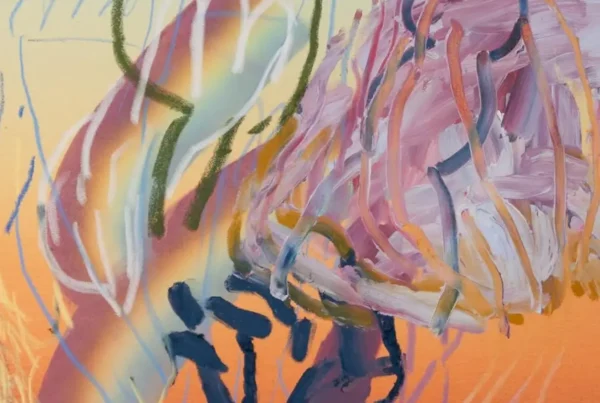Nara Yoshitomo: Childhood Imagery with a Twist
From his early days in Aomori Prefecture to global exhibitions, Nara Yoshitomo has continually fascinated the art world with his unique portrayal of children and animals. At a glance, his works feature innocent-looking figures: big-headed girls and whimsical creatures that capture the viewer’s attention with their simplicity and apparent naivety. However, a closer look reveals a startling edge—these characters often wield small weapons, such as knives or slingshots. Nara explains that these elements are not intended to portray the figures as aggressors. Instead, they symbolize the vulnerability and resilience of children facing the harsh realities of the world. This juxtaposition invites viewers to ponder the complexity of childhood, which is both pure and yet shadowed by the inevitability of growing up.
This thematic choice is deeply personal for Nara. His art is not just a form of expression but a reflection of his own experiences and observations. The big-headed girls, a signature motif, are more than just recurrent characters; they are vessels carrying a wide range of emotions and stories. By placing these innocent figures in slightly unsettling scenarios, Nara challenges the viewers to reflect on the dichotomy of human nature and the innocence associated with childhood that is often lost or corrupted by the adult world. This profound message is woven seamlessly into his artwork, making each piece a narrative of complex emotions displayed in what appears to be a simple form.
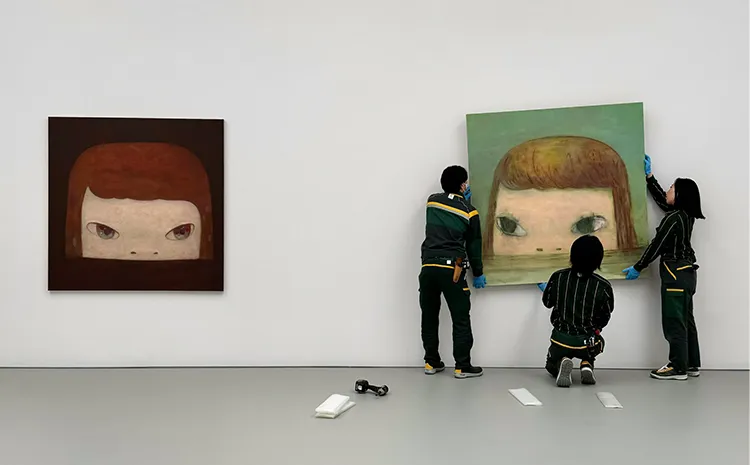
Influences from East and West
The trajectory of Nara Yoshitomo’s artistic evolution has been significantly shaped by his exposure to Western culture, particularly through music. The American military radio was his window to a world of diverse musical genres during his upbringing in post-war Japan. Bands like The Clash and Shonen Knife did not just entertain; they imbued him with a rebellious spirit that later became a foundational element of his artistic expression. The influence of punk rock, known for its raw energy and resistance against the status quo, is evident in the rebellious themes and aesthetic elements of his work. Moreover, the visual styles of album covers from these bands offered Nara a new language of visual expression, which he adapted and integrated into his art.
His educational experiences in Japan and Germany also played crucial roles in shaping his approach to art. While the academic environment in Japan offered a structured view of art, his time at the Kunstakademie Düsseldorf in Germany introduced him to a more liberated perspective. It was in Germany that Nara embraced a more autobiographical style, allowing personal history and cultural identity to deeply influence his works. This blend of Eastern and Western influences is not just a stylistic choice but a thematic exploration of his dual heritage. In his art, one can see the seamless integration of Japanese aesthetics with Western cultural motifs, creating a unique visual narrative that resonates with a global audience.
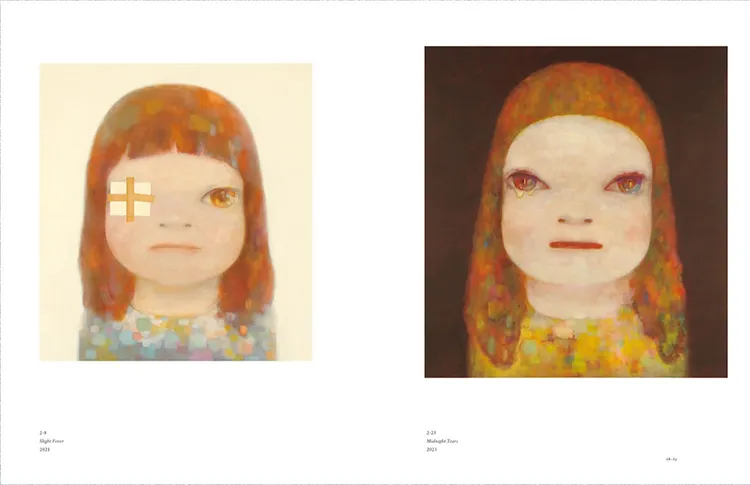
The Autobiographical Art of Nara Yoshitomo
Nara Yoshitomo’s artwork is an intimate diary of his life experiences, intricately tied to his childhood memories and the cultural ambiance of his early years in Japan. Each painting and sculpture is a fragment of Nara’s past, meticulously crafted to convey the emotional and psychological landscape of his upbringing. This personal touch is what gives his art its profound impact—viewers are not just seeing a piece of art; they are peering into the artist’s soul. During his recent exhibition at the Aomori Museum of Art, aptly titled “The Beginning Place,” Nara presented a curated reflection of his roots. The show was not merely a display of artworks but an unfolding narrative that bridged his past experiences with his contemporary creative expressions. This exhibition stood out as a poignant homage to his hometown, weaving together the influences and experiences that shaped him both as an individual and as an artist.
The depth of Nara’s work is further enriched by the cultural references that pervade his art. These are not arbitrary choices but deliberate incorporations that resonate with shared experiences and collective memories. Whether it’s the subtle homage to Japanese pop culture or the overt references to the music he loves, each element within his paintings adds layers of meaning. Such details invite the audience to delve deeper, encouraging them to interpret and find connections within their own lives. It’s this ability to evoke personal reflection through his art that has endeared Nara Yoshitomo to audiences worldwide, making his exhibitions not just successful but deeply impactful.
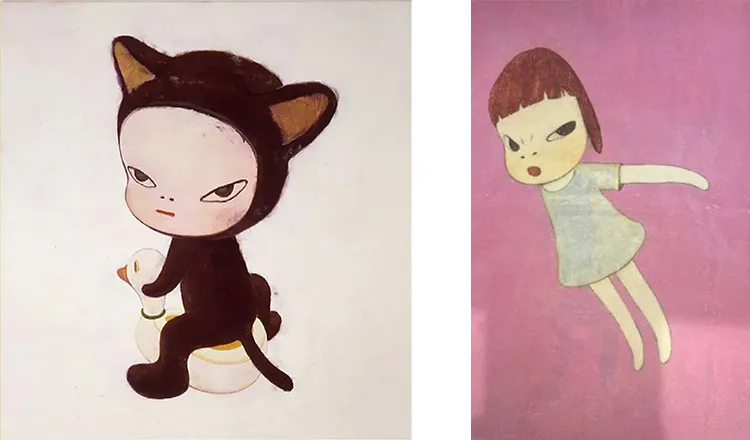
The Resonance of Cultural Clash
Growing up in post-war Japan, Nara Yoshitomo experienced firsthand the infiltration of Western pop culture into the traditional Japanese lifestyle. This blend of cultures, often contradictory, played a significant role in shaping his artistic vision. His works frequently depict this cultural clash, showing children who embody innocence yet are surrounded by symbols of Western influence and modernity. This juxtaposition is not merely visual; it symbolizes the broader societal changes and the tension between maintaining cultural heritage and embracing new, foreign elements. Nara’s ability to capture this duality reflects a universal theme—the struggle of identity in a rapidly globalizing world.
Moreover, the influence of his upbringing is evident in the way he portrays the innocence of childhood against a backdrop of darker, more complex themes. Nara uses his art to explore and question the impact of cultural and societal shifts on personal identity and growth. The recurring themes of innocence and rebellion serve as a commentary on the resilience of the human spirit in the face of external pressures and changes. By weaving his personal history with broader cultural narratives, Nara Yoshitomo offers a profound insight into the evolving identity of individuals within society, making his work not only visually captivating but also intellectually stimulating.
